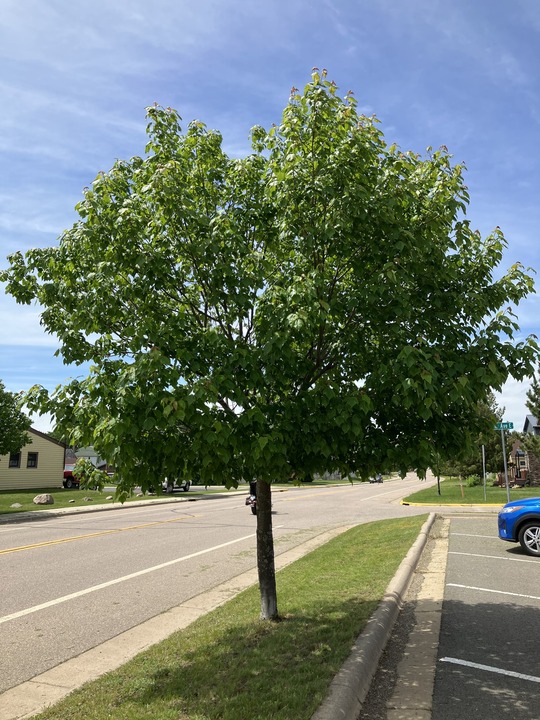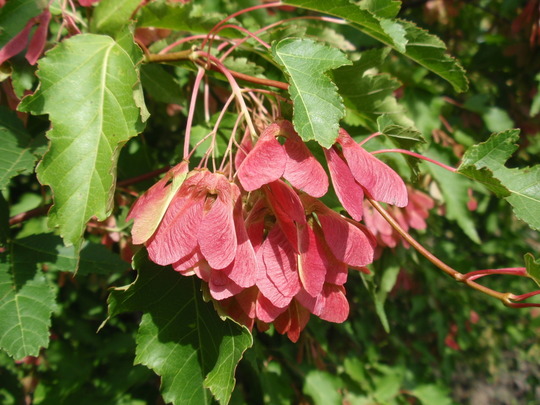|
Having trouble viewing this email? View it as a Web page.
September 1, 2023
September Weed of the Month: Tatarian maple
When Tatarian maple establishes in new landscapes, seedlings quickly form dense monocultures that outcompete other species
Julia Dellick, Minnesota Department of Agriculture
Tatarian maple (Acer tataricum L.) is a deciduous tree with a dense round crown reaching up to 30 feet tall. It can grow either as a multi-stemmed shrub or a small tree. Tatarian maple has simple, unlobed, medium green leaves with irregular serrated margins. In the fall, the leaves change color to yellow. Tatarian maple was introduced to the United States from its native range of southeastern Europe to western Asia as a landscaping tree, due to its size and showy colors.
 Tatarian maple can grow up to 30 feet tall with a round, dense crown.
Click here to download the photo.
In the springtime, small greenish to yellowish-white flowers bloom on the tree. The flowers are then followed by samaras in the summer and fall. The samaras grow up to 1 inch in length and turn a flashy red color before browning. Samaras are a winged casing that enclose and help transport the seed via wind. Due to the abundant number of samaras produced by an individual tree, wind is the primary mode of dispersion for Tatarian maple. Most seeds land within 100 yards of the parent tree, but seeds can potentially be carried longer distances by wind and water.
 Samaras of the Tatarian maple turn a showy red in the late summer and fall.
Click here to download the photo.
When Tatarian maple establishes in new landscapes, seedlings quickly form dense monocultures that outcompete other species. Native species become reduced, decreasing the quality of the local ecosystem. There are no current reports that Tatarian maple poses a significant threat to humans or livestock. However, the University of Minnesota’s Extension program on horses classifies the wilted leaves of all maples as toxic.
Small infestations of Tatarian maple can be manually controlled by digging and removing the root crowns. Infestations can also be managed by cutting and treating the stumps with herbicide or basal bark spray treatments. For specific herbicide recommendations, check with your local University of Minnesota Extension agent, co-op, or certified landscape care expert.
In Minnesota, Tatarian maple is classified as Specially Regulated on the Minnesota Noxious Weed list. Anyone selling this species must affix a label directly to the plant or container packaging that advises buyers to only plant Tatarian maple and its cultivars in landscapes where the seedlings will be controlled by mowing or other means. The label should also state that Tatarian maple seed is wind dispersed and trees should be planted at least 100 yards from natural areas.
MEDIA: For more information on Weed of the Month, contact Brittany Raveill, MDA Communications, at brittany.raveill@state.mn.us or 651-201-6131
|